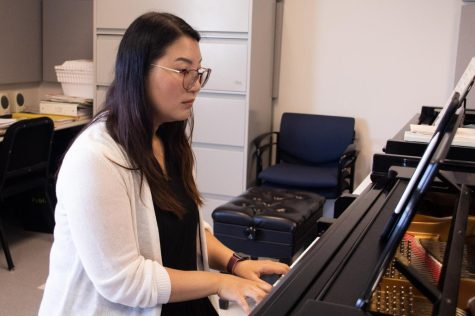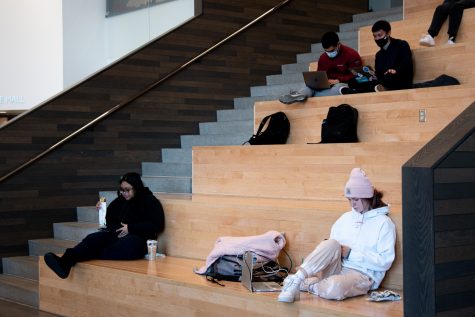Employment of certain groups more likely to be affected by pandemic, study says
Married women, women with children, people with disabilities, people born outside of U.S. more likely to lose employment or become part-time
RACHEL SUN | DAILY EVERGREEN FILE
A study examining unemployment during COVID-19 found that women with children, people with disabilities, as well as certain racial and ethnic groups were more likely to lose employment or experience a decrease in hours.
June 24, 2020
A WSU associate professor interested in the effects of the pandemic and resulting recession authored a paper on groups of people whose employment is more likely to be affected during COVID-19.
Ben Cowan, associate professor for the WSU School of Economic Sciences, conducted a study that found people who worked in February and became unemployed, out of the labor force or absent from work in April, were more likely to be part of less-privileged groups.
Cowan said he defined unemployed as someone who does not hold a job but is actively looking for one, whereas being out of the labor force is someone who does not have a job and is not actively looking for one. Someone being absent from work is defined as a person who is employed but is not working due to reasons such as illness, he said.
These definitions come from the Bureau of Labor Statistics, Cowan said.
It was more likely that married men and men with children were still at work in April when compared to single men or men without children, Cowan said.
“There were interesting gender differences,” Cowan said. “That higher likelihood of being at work in April associated with children and married [men] is not there for women.”
Married women were less likely than married men to still be at work in April, he said. The same was true for women with children.
People with a disability and workers without a college degree were also less likely to still be employed in April, he said.
Other groups who were less likely to be employed in April were non-White people and people not born in the U.S., as well as the youngest and oldest workers, Cowan said.
His paper states White people had a higher likelihood to still be at work in April when compared to people of other races and ethnicities. This has also been confirmed by studies done by other researchers, including Robert Fairlie, economics professor at the University of California at Santa Cruz.
Cowan said he used data from the “Current Population Survey,” which is a monthly survey of individual households that collects information about the labor force.
Overall, the data showed that there were 22,785 people at work in February, and 76 percent of them were still working in April, according to Cowan’s paper.
Fairlie said he and his research partners also used data from the Current Population Survey gathered in February and April to determine how those numbers compare to unemployment during the Great Recession.
Fairlie said they found that Black people were not disproportionately impacted in terms of unemployment when compared to White people. However, Latinx people were more disproportionately impacted than White people during the pandemic.
He said there is some evidence that the industries and jobs Black people work in helped shield them from further job losses. However, the impact on Black people was still very large.
White people were less impacted than people of other races and ethnicities, but all groups saw an unemployment increase due to the pandemic, Fairlie said.
Fairlie said the gap between unemployment for Black and White people is smaller during COVID-19 than during the Great Recession of 2007-2009. He thinks this is because there was a layoff pattern during the Great Recession where Black people were disproportionately impacted, but with COVID-19, almost everything had to shut down.
Cowan said he also included another dimension of the labor force the pandemic has affected: the hours worked by people who are still employed. Full-time employees work at least 35 hours per week, and part-time workers work less than 35 hours per week.
Employers whose businesses have been hit hard by the recession may have had to adjust by changing their employees’ hours, he said.
“It’s also possibly the case that individuals have adjusted their labor supply as a result of the pandemic,” he said. “The most obvious case of that would be parents having to adjust their work schedules because kids are out of school.”
He said there were large effects in all of the transitions he looked at: the changes from full-time to part-time, full-time to having no work, working to unemployed, working to out of the labor force, and working to being absent from work.
Not only were the same groups of people less likely to still be employed in April, but it was more likely for people in those groups who still had work in April to have moved from full-time status to part-time, Cowan said.
There were 17,880 people in February who worked full-time, according to his paper. However, 69 percent of those people worked full-time in April.
Cowan said this research is a starting point for telling whose employment is being most affected during the pandemic.





















